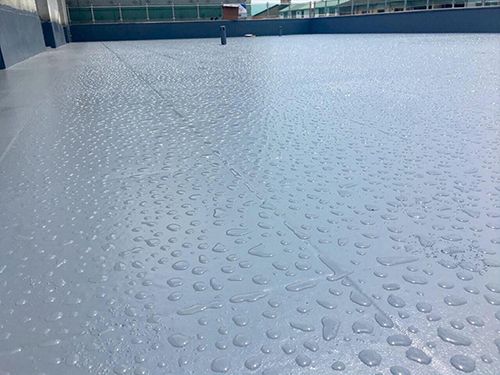Waterproofing Informations

Applications made by various construction chemicals to increase the structures’ service life and make them resistant to abrasion, corrosion, or leaks called waterproofing. Waterproofing is an insulation made of a water-resistant material that is less affected by water than other materials. It prevents the building from getting water when used under certain conditions.
It necessary for the protection of concrete and reinforcements, which are the carrier systems of the buildings, from wear and corrosion. You should make waterproofing applications during the construction phase of the buildings. It primarily done in basements, garages and cellars of buildings. In other words, you should do it to the parts of the building that are under the ground. The most damaging substance to the building is water and humidity. The entire structure can damaged when the foundation of the building receives water or moisture. This isolation prevents the building from absorbing water and moisture. Waterproofing ensures that the building has a longer life and is resistant to water.

How Is Water Insulation Made?
You should do the waterproofing in the most appropriate way for the building. It is different for each building. Waterproofing provides nearly 100% protection while the foundation of the building laid. Some factors make waterproofing difficult later on. The first of these factors is that the building is old. That is, it has already been weathered by moisture and water. The second is that it is the adjacent building. Finally, due to factors such as the ground structure of the region, the waterproofing of the building can not completed or waterproofing can not done. For this isolation, some rules must followed first. If there is a water leak in the foundation, this isolation can only be done from the inside. This insulation does not prevent the building from getting water. It only protects the underground areas from moisture.
Suitable Surfaces
There are many areas of buildings that come into contact with water, which we call wet areas. Examples of these areas are foundation walls, terrace roofs, bathrooms, kitchens, or toilets.
Waterproofing minimizes water leakage in pools, prevents water leaks in wet places such as bathrooms and WCs, saves water in water tanks, and prevents spills in hidden streams, roofs, terraces, balconies, windowsills, and foundations, or exterior walls of apartments.
Why Is Waterproofing Important?
 Soil absorbs water in precipitation, but when it is saturated with water, it can no longer absorb water and begins to give water. In today’s cities where there are buildings everywhere, it is not possible for the soil to absorb water anyway. That’s why we see that the parts of the buildings that are under the ground get water, there is moisture, and even flood in the rain. When the walls under the ground get wet, the carriers of the building are damaged. Exposure of the walls in the ground to moisture causes doubts in the soundness of the structure. Waterproofing is usually done on the lowest parts of the buildings, that is, in areas such as garages, cellars, warehouses, which are under the ground. For this, it is necessary to have waterproofing, especially when the building is still under construction.
Soil absorbs water in precipitation, but when it is saturated with water, it can no longer absorb water and begins to give water. In today’s cities where there are buildings everywhere, it is not possible for the soil to absorb water anyway. That’s why we see that the parts of the buildings that are under the ground get water, there is moisture, and even flood in the rain. When the walls under the ground get wet, the carriers of the building are damaged. Exposure of the walls in the ground to moisture causes doubts in the soundness of the structure. Waterproofing is usually done on the lowest parts of the buildings, that is, in areas such as garages, cellars, warehouses, which are under the ground. For this, it is necessary to have waterproofing, especially when the building is still under construction.
Benefits of Waterproofing
Waterproofing protects the building and helps make it stronger. The sections under the ground in the waterproofed building can not exposed to water and moisture. So it provides the foundation of the building. A solid foundation means a solid structure. Waterproofing offers comfort to the building. In the areas where waterproofing applied in the building, conditions such as mold can not encountered. This isolation increases the lifetime of the building. Thanks to the solid foundation this isolation, it becomes stronger and extends the life of the building. The benefits of waterproofing are basically to protect the building.


